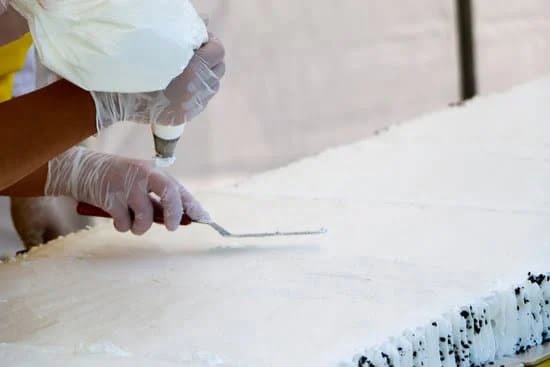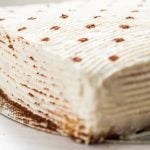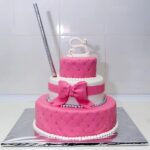Are you ready to unleash your inner baker? Look no further than the 4H Cake Decorating Level 1 program. In this article, we will dive into the exciting world of cake decorating and explore the comprehensive Level 1 course offered by the renowned organization, 4H. Whether you are a beginner or have some experience in baking, this program is designed to help you develop and enhance your cake decorating skills to create stunning edible masterpieces.
But first, let’s understand what exactly is 4H and why their Cake Decorating Program holds such significance. Founded over a century ago, 4H is a youth development organization that empowers young individuals to become confident leaders through various agricultural and home economics projects. Their Cake Decorating Program not only teaches baking techniques but also instills values such as creativity, patience, and attention to detail in participants.
Now let’s delve into the details of 4H Cake Decorating Level 1. This comprehensive overview will provide you with a glimpse into what you can expect from this course. From learning basic techniques like frosting consistency and piping designs to exploring different cake styles and themes, Level 1 has got you covered. Each module is carefully crafted to build upon the previous one, ensuring that you develop a strong foundation in cake decorating.
Stay tuned for our step-by-step guide on mastering basic cake decorating techniques in Level 1. We will walk you through each stage from leveling and crumb coating your cake to creating intricate borders and decorations that will leave everyone amazed. Additionally, we’ll discuss the essential tools and ingredients you’ll need for this course so that you can be fully prepared before embarking on your cake decorating journey with 4H.
Join us as we uncover all the secrets to success in 4H Cake Decorating Level 1. From tips and tricks shared by experienced professionals to testimonials from past participants who have witnessed extraordinary growth, this article aims to provide valuable insights into how you can make the most out of this program. Finally, we’ll address some frequently asked questions to address any concerns or queries you may have before taking the plunge into Level 1.
So, are you ready to embark on an exciting adventure into the world of cake decorating? Let’s unleash your inner baker with 4H Cake Decorating Level 1.
What is 4H and the significance of their Cake Decorating Program?
4H is a youth development organization that aims to empower young people with the necessary skills and knowledge to become active, engaged citizens in their communities. With a rich history dating back over 100 years, 4H provides young individuals with opportunities for personal growth, leadership development, and hands-on learning experiences. One of the many programs offered by 4H is Cake Decorating, which holds significant value for both participants and the community.
The Significance of the 4H Cake Decorating Program
The 4H Cake Decorating Program is a valuable resource that equips young individuals with essential life skills while encouraging creativity and self-expression. Aspiring bakers are given the opportunity to learn fundamental cake decorating techniques, fostering their artistic abilities and culinary talent. Beyond acquiring technical skills, participants also develop important traits such as patience, attention to detail, and problem-solving abilities.
This program serves as an excellent platform for young people to explore their passion for baking and pastry arts. By participating in the 4H Cake Decorating Program, individuals gain confidence in their abilities while also building a strong foundation for potential future careers or hobbies within the culinary industry.
Additionally, being a part of this program allows participants to contribute positively to their communities through activities such as volunteering at local events or sharing their baked goods with those in need.
What Makes 4H Unique?
What sets 4H apart from other youth organizations is its emphasis on “learning by doing.” Participants actively engage in hands-on experiences where they can apply the knowledge they acquire through various programs like the Cake Decorating Program. This approach not only enhances learning retention but also encourages critical thinking and problem-solving skills.
Moreover, 4H places great importance on mentorship and guidance. Each participant of the Cake Decorating Program is paired with an experienced adult volunteer who becomes their mentor throughout the journey. These mentors provide support, guidance, and encouragement as participants progress through the program, ensuring that they receive personalized attention to maximize their learning and growth. The mentorship aspect of 4H creates a nurturing and empowering environment where young individuals can thrive and develop valuable relationships with adult role models.
4H Cake Decorating Level 1
In 4H Cake Decorating Level 1, participants will have the opportunity to learn the basics of cake decorating and unleash their inner baker. This comprehensive overview will give you an idea of what to expect from this program.
During Level 1, participants will be introduced to the fundamental skills and techniques in cake decorating. They will learn how to properly prepare a cake for decorating, including leveling and filling it. Participants will also explore different types of icing and practice basic piping techniques such as borders, dots, and simple designs.
One important aspect of 4H Cake Decorating Level 1 is the emphasis on food safety and hygiene. Participants will learn about proper sanitation practices when working with food products. They will also be educated on safe handling and storage of ingredients, as well as guidelines for allergen management.
To enhance their learning experience, participants will have hands-on opportunities to decorate cakes using various tools and materials. These may include piping bags, spatulas, turntables, cake boards, and a variety of icing tips. Different types of edible decorations like sprinkles, candies, and fondant may also be used to add creativity to their designs.
By the end of Level 1, participants should have a solid foundation in basic cake decorating techniques and be able to confidently create simple designs on cakes. It is important for participants to take their time practicing these skills in order to build confidence and proficiency before moving on to more advanced levels.
What participants will learn in 4H Cake Decorating Level 1
- The basics of cake preparation
- Introduction to different types of icing
- Piping techniques for borders, dots,and simple designs
- Safe handling and storage practices
- Proper sanitation in food preparation
- Working with various tools and materials
What participants will need for 4H Cake Decorating Level 1
- Cake pans and baking supplies
- Icing bags and tips
- Icing spatula or offset spatula
- Cake turntable
- Cake boards
- Piping gel, food coloring, and edible decorations (sprinkles, candies, fondant)
Practical tips for success in 4H Cake Decorating Level 1
- Practice regularly to build skill and confidence
- Follow recipes and instructions carefully
- Pay attention to detail in measurements and mixing ingredients
- Experiment with different techniques to develop your own style
- Seek feedback from experienced decorators for improvement
With this comprehensive overview of 4H Cake Decorating Level 1, participants can have a clear understanding of what they’ll be learning and what tools they’ll need. This program offers a great opportunity for individuals to explore their passion for baking while developing valuable skills in cake decorating.
Step-by-step guide to mastering basic cake decorating techniques in Level 1
Gather the Necessary Tools and Ingredients
Before you begin your journey in mastering basic cake decorating techniques in Level 1, it is important to gather all the necessary tools and ingredients. Here are some of the essential items you will need:
- Cake Decorating Tools: Invest in a good set of cake decorating tools, including piping bags, tips, spatulas, a turntable, a cake leveler or serrated knife, and a cake stand.
- Baking Essentials: Make sure you have all the basic baking essentials such as measuring cups and spoons, mixing bowls, an electric mixer or whisk, an oven thermometer to ensure accurate temperature control, and an offset spatula for smoothing out icing.
- Ingredients: For Level 1, you will need basic ingredients such as flour, sugar, butter, eggs, milk, baking powder or soda, vanilla extract or other flavorings depending on your recipe. Additionally, you will require food coloring gels or powders to add color to your icing.
Mastering Basic Techniques
Now that you have all your tools and ingredients ready to go, let’s dive into the step-by-step process of mastering the basic cake decorating techniques in Level 1:
- Baking the Cake: Start by following a simple cake recipe of your choice or using a box mix. Bake the cake according to the instructions provided.
- Leveling and Stacking: Once your cakes have cooled completely, use a leveler or serrated knife to trim off any domed tops and create an even surface. Stack the layers with a thin layer of buttercream frosting in between each one.
- Crumb Coat: Apply a thin layer of buttercream frosting to seal in any crumbs on the outside of the stacked cake. Smooth it out using an offset spatula.
- Piping Borders: Fill a piping bag fitted with a small round tip with buttercream frosting. Hold the bag at a 45-degree angle and apply pressure to create borders along the top and bottom edges of the cake.
- Basic Piping Techniques: Experiment with different piping tips to create basic designs such as dots, rosettes, stars, and shells. Practice these techniques on a separate surface before applying them to your cake.
- Adding Colors and Designs: Divide your buttercream frosting into smaller bowls and add food coloring gels in your desired shades. Use piping bags with different tips to create various designs on your cake.
- Finishing Touches: Finally, add any additional decorations such as sprinkles, edible pearls, or fondant accents to complete the look of your cake.
By following this step-by-step guide, you will be well on your way to mastering the basic cake decorating techniques in Level 1.
Practice Makes Perfect.
Remember that practice is key when it comes to mastering any skill, including cake decorating. Don’t be too hard on yourself if your first attempts don’t turn out exactly as planned – it takes time to develop the necessary finesse and precision. Take your time, be patient with yourself, and most importantly, have fun. The more you practice these basic techniques, the more confident you will become in your cake decorating abilities.
In the next section of this article, we will share some valuable tips and tricks for success in 4H Cake Decorating Level 1 that will help you further enhance your skills and creativity.
The tools and ingredients you’ll need for 4H Cake Decorating Level 1
When starting the 4H Cake Decorating Level 1 program, it’s important to gather all the necessary tools and ingredients beforehand. Having the right equipment and supplies will not only make your cake decorating journey smoother but also enhance your creativity and skills. Here is a list of essential tools and ingredients you’ll need for 4H Cake Decorating Level 1:
Tools
- Piping Bags: These are crucial for applying frosting and creating various designs on cakes. Opt for reusable piping bags made from durable materials.
- Piping Tips: Invest in a set of basic piping tips like round, star, leaf, and petal tips. They will help you achieve different textures and patterns on your cakes.
- Offset Spatula: This tool is used for spreading frosting smoothly on cakes and achieving a professional finish.
- Turntable: A turntable allows easy rotation of the cake while decorating. It helps create even designs without straining your hand.
- Palette Knife: A palette knife can be used for many purposes, such as lifting delicate decorations or smoothing icing on cake surfaces.
Ingredients
- Cake Mix or Ingredients for Homemade Cake Batter: Depending on your preference, you can either use pre-made cake mix or gather ingredients like flour, sugar, eggs, butter, etc., to bake the cake from scratch.
- Frosting: Choose a frosting flavor that complements your cake. Popular options include buttercream, cream cheese icing, or ganache.
- Gel Food Coloring: Gel food coloring provides vibrant colors to your frosting without making it too runny. Start with primary colors like red, blue, yellow, black, and white to mix and create different shades.
- Sprinkles and Decorations: Add a touch of fun and personality to your cakes with sprinkles, edible pearls, or other decorative elements.
- Flavor Extracts: Enhance the taste of your cake by using extracts like vanilla, almond, or lemon. These can be added to both the cake batter and frosting.
By ensuring you have these essential tools and ingredients in place, you’ll be fully prepared to embark on your 4H Cake Decorating Level 1 journey. Remember, as you progress through the program, you may discover additional tools or ingredients that suit your personal style and preferences. Enjoy the process and let your creativity shine.
Tips and tricks for success in 4H Cake Decorating Level 1
When it comes to succeeding in the 4H Cake Decorating Level 1 program, there are a few key tips and tricks that can make all the difference. Whether you’re new to cake decorating or have some experience under your belt, these strategies will help you unleash your creativity and achieve beautiful results.
First and foremost, it’s important to start with a solid foundation. This means familiarizing yourself with the basic techniques and skills required in cake decorating. Take the time to practice piping different shapes, mastering smooth icing application, and creating simple designs. Building this strong base of knowledge will set you up for success as you progress through the program.
Another tip is to be patient with yourself and embrace the learning process. Remember that cake decorating is an art form that takes time to develop. Don’t be discouraged if your first attempts don’t turn out exactly as planned. Instead, view each cake as an opportunity to learn and improve. Allow yourself room for trial and error, and don’t be afraid to ask for help or seek guidance from more experienced decorators.
Creativity is also key in 4H Cake Decorating Level 1. While there may be specific techniques and designs taught in the program, don’t be afraid to add your own personal flair. Experiment with different colors, textures, and embellishments that reflect your unique style. The more you let your creativity shine through, the more satisfying and enjoyable your cake decorating journey will be.
Testimonials from past participants of 4H Cake Decorating Level 1
Hearing from past participants can provide valuable insights and feedback about the 4H Cake Decorating Level 1 program. Here are some testimonials from individuals who have completed the program and experienced its benefits firsthand:
- Emily, age 13: “Taking part in 4H Cake Decorating Level 1 was an amazing experience for me. I always had a passion for baking and this program allowed me to explore my creativity in a whole new way. I learned so many techniques, like piping and fondant work, that I never thought I could do before.
The instructors were knowledgeable and supportive throughout the process. This program not only helped me develop my baking skills, but also improved my teamwork and communication abilities. “ - Sarah, age 15: “I decided to join the 4H Cake Decorating Level 1 program as a fun extracurricular activity, but it turned out to be much more than that. Not only did I learn how to make beautiful cakes, but I also gained confidence in myself. Seeing the smiles on people’s faces when they saw my creations was incredibly rewarding.
The program taught me discipline and patience as well, as cake decorating is definitely an art that requires attention to detail. If you’re passionate about baking or want to try something new, I highly recommend giving this program a go. “ - Daniel, age 17: “4H Cake Decorating Level 1 was an incredible learning journey for me. The curriculum was structured in a way that allowed us to start with the basics and gradually build upon our skills. Each session was hands-on and interactive which made the learning process enjoyable. The instructors provided constructive feedback and encouraged us to think creatively when decorating our cakes.
It was inspiring to see how everyone’s unique style emerged throughout the course. Overall, this experience enhanced my love for baking and sparked an interest in pursuing a career in the culinary arts. “
These testimonials highlight the positive impact that 4H Cake Decorating Level 1 can have on participants. Whether it’s developing new skills, boosting confidence, or inspiring future aspirations, this program offers a rewarding and enriching experience for aspiring bakers of all ages.
Frequently Asked Questions about 4H Cake Decorating Level 1
If you’re considering joining the 4H Cake Decorating Level 1 program, you might have some questions about what to expect. Here are some answers to commonly asked questions.
- Q: Who is eligible to participate in the 4H Cake Decorating Level 1 program?
- A: The program is open to youth between the ages of 9 and 18. You don’t need any prior experience in cake decorating, but a passion for baking and creativity is encouraged.
- Q: How long does the program last and how often do we meet?
- A: The duration of the program may vary depending on your local 4H chapter, but typically it runs for around six weeks. Meetings are usually held once a week for a few hours. Make sure to check with your local chapter for specific details.
- Q: What will I learn in 4H Cake Decorating Level 1?
- A: In this program, you will learn the basics of cake decorating. You’ll start by learning how to properly prepare a cake for decoration, including leveling and frosting techniques. From there, you’ll progress to more advanced skills such as piping borders and writing messages on cakes. By the end of the course, you’ll have gained a solid foundation in cake decorating.
- Q: How much does it cost to join?
- A: The cost of joining the program can vary depending on your local chapter. There may be a small membership fee or materials fee involved. However, many chapters offer scholarships or financial assistance to ensure that all youth have access to the program regardless of their financial situation.
- Q: Do I need any special equipment or ingredients?
- A: While certain tools and ingredients will be provided during classes, it’s recommended that participants have their own basic set of decorating tools including piping bags, tips, spatulas, and a turntable. Additionally, participants should have access to ingredients for cake and frosting recipes, such as flour, sugar, butter, and food coloring.
These are just a few frequently asked questions about the 4H Cake Decorating Level 1 program. If you have more specific questions or would like to find out more information, reach out to your local 4H chapter or visit their website. Enjoy the journey of exploring your baking skills and unleash your creativity as you dive into this exciting program.
Leveling up
In 4H Cake Decorating Level 2 and beyond, participants can expect to further enhance their skills and explore more advanced cake decorating techniques. Building upon the foundation set in Level 1, Level 2 introduces new concepts and challenges that will push participants to expand their creativity and abilities.
One of the key focuses of Level 2 is developing a deeper understanding of design principles. Participants will learn about color theory, harmony, balance, and proportion, allowing them to create visually stunning cakes that truly stand out. Additionally, they will explore different styles and themes in cake decorating, such as fondant work, gum paste flowers, piping techniques, and sculpting.
Level 2 also provides an opportunity for participants to experiment with more intricate designs. From elegant wedding cakes to elaborate birthday creations, participants will have the chance to take their cake decorating skills to the next level by mastering complex techniques like tiered cake construction and advanced fondant decorations.
Beyond Level 2, there are even more exciting opportunities awaiting aspiring cake decorators. In higher levels of the 4H Cake Decorating program, participants can delve into specialty areas such as sugar artistry, airbrushing techniques, chocolate work, and even competition-level designs. These advanced levels allow participants to fully immerse themselves in the world of professional cake decorating and opens doors for potential careers or side hustles in the industry.
Overall, transitioning from Level 1 to Level 2 is a thrilling journey filled with growth and creativity. Whether you’re an aspiring professional or simply looking to further develop your passion for cake decorating as a hobbyist, participating in 4H’s Cake Decorating Program offers endless possibilities for unleashing your inner baker. So why wait? Take the leap into Level 2 and beyond today.
Frequently Asked Questions
What are the levels of cake decorating?
Cake decorating can be categorized into different levels based on the complexity and skill required. The first level is basic cake decorating, which involves simple techniques such as spreading icing smoothly, piping borders or basic designs, and adding sprinkles or other edible decorations. Intermediate cake decorating is the next level, where decorators expand their skills to include more intricate piping work like flowers or detailed designs.
Advanced cake decorating is a higher level that involves creating elaborate designs using advanced techniques such as sculpting with fondant or creating realistic sugar flowers. Professional cake decorating is the highest level, reserved for those who have mastered all the previous levels and can create flawless cakes with complex design elements.
What are the 5 kinds of cake decorating?
There are five main types of cake decorating techniques that are commonly used by decorators. The first one is buttercream decoration, which involves using buttercream icing to create various designs like piped flowers, rosettes, or borders on a cake’s surface. Another type is fondant decoration, where a smooth layer of rolled fondant is used to cover and decorate the cake’s surface. Fondant allows for more intricate details and can be sculpted into various shapes or figures.
Royal icing decoration uses a stiff mixture of confectioners’ sugar and egg whites to pipe delicate designs like lacework or intricate patterns on a cake. Gum paste decoration utilizes a pliable gum paste made from powdered sugar and gelatin to create unique elements like flowers, leaves, or figurines that can harden once dry. Lastly, marzipan decoration involves working with almond-based marzipan to shape and mold different decorations like fruits or characters.
How do you ice a 4 layer cake?
Icing a four-layer cake requires some care and attention to ensure an even distribution of frosting between each layer while achieving a smooth finish overall. Begin by placing one layer of the cake on your serving plate or turntable before applying a generous amount of icing on top using an offset spatula or palette knife. Spread the icing evenly, ensuring it reaches the edges. Gently place the second cake layer on top and repeat the process until all layers are stacked. Apply a thin layer of icing to the sides and top of the cake to create a crumb coat that seals in any loose crumbs.
This initial layer does not have to be perfect. Chill the cake in the refrigerator for about 15-20 minutes to allow it to set. Finally, apply a final layer of icing, starting with the sides and then smoothing out the top using long, even strokes. Continue until you achieve your desired finish, making sure to scrape away excess frosting as needed. Optionally, you can add decorations or piping to enhance the appearance of your four-layer cake before serving.

Welcome to our cake decorating blog! My name is Destiny Flores, and I am the proud owner of a cake decorating business named Cake Karma. Our mission is to provide delicious, beautiful cakes for all occasions. We specialize in creating custom cakes that are tailored specifically to each customer’s individual needs and tastes.





